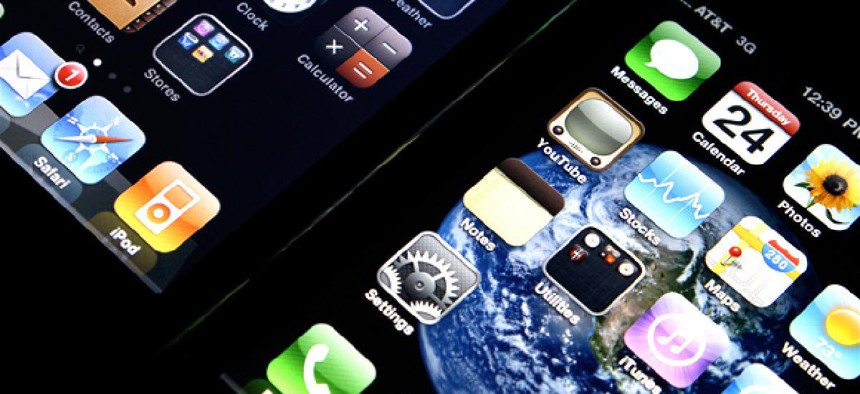ICE gives thousands of employees <span>i</span>Phones for work and play

Flickr user Yutaka Tsutano
Agency began distributing secured government-owned Apple devices after discontinuing a BlackBerry contract.
Following a three-month iPhone trial, Immigration and Customs Enforcement has turned on security software to protect employees’ work and personal data on as many as 17,000 government-owned devices.
Personnel allotted iPhones are allowed to download apps for private use, as long as the software and data do not violate business behavior policies, ICE officials told Nextgov.
“These are government devices and ICE has a limited personal use policy that provides for users to add applications and data that does not violate professional conduct standards of the agency,” ICE Press Secretary Barbara Gonzalez said. “The devices are subject to inspection or retrieval – just like any piece of government equipment.”
The agency currently is distributing the devices in batches to investigators, legal personnel and other staff, officials said.
“The deployment is on schedule and we’re using a geographical-based deployment plan. At this point, we’re not disclosing numbers, but we’re happy with the pace of activation,” Gonzalez said.
In October, ICE disclosed that it would replace its existing Research in Motion BlackBerry smartphones with Apple iPhones because RIM’s products could no longer meet the law enforcement agency’s needs.
After evaluating RIM’s rate of innovation, business model sustainability and the attributes of other smartphones on the market, including Android devices, ICE opted to embrace the iPhone, according to contracting papers.
Now the agency’s iPhones are set up for “selective wiping” if a device is misplaced or stolen, meaning that ICE can erase all government data on the phones remotely but preserve employee apps and other personal files, according to Good Technology, a mobile security firm facilitating the rollout.
Gonzalez confirmed that “in the case of loss, only corporate data will be wiped; personal data will be retained,” but added “that does not imply how ICE will operationally use the technology and ICE will not comment on the specifics of our operational procedures.”
On Thursday, Eugene Liderman, director of public sector technology for Good Technology, said, “As of today, they have the infrastructure up and running to scale up” to 17,000 users. Good Technology actually is under contract to secure up to 25,000 users, he added.
For 18 months before the iPhone announcement, Good Technology worked with numerous Homeland Security Department officials, including the DHS inspector general, to ensure its technology could shield data and applications from remote hackers and unauthorized people who try handling the phone, company officials said.
The features ICE was looking for in a new smartphone, beyond tight security, included operating system consistency and the flexibility to handle “fingerprint and retina scanning for immediate identification of an individual,” as well as facial recognition.
Agencies are shedding BlackBerrys to buy Apple and Android-based smartphones that offer a greater choice of phone features, according to Government Executive Media Group research. BlackBerry use among federal managers dropped 77 percent between August 2009 and September 2011, while iPhone use nearly tripled during that period.
RIM, hoping to bounce back, announced in December that ICE is testing its latest BlackBerry 10 business line. The new BlackBerrys, like older versions, comply with a government encryption specification required for sensitive data called Federal Information Processing Standard 140-2. Apple’s phones are not FIPS-certified yet.
Good Technology officials said their software provides the same kind of agencywide control over device settings and data access that comes with BlackBerry services, when layered on top of the iPhone’s operating system.
NEXT STORY: It is now a crime to unlock your smartphone






